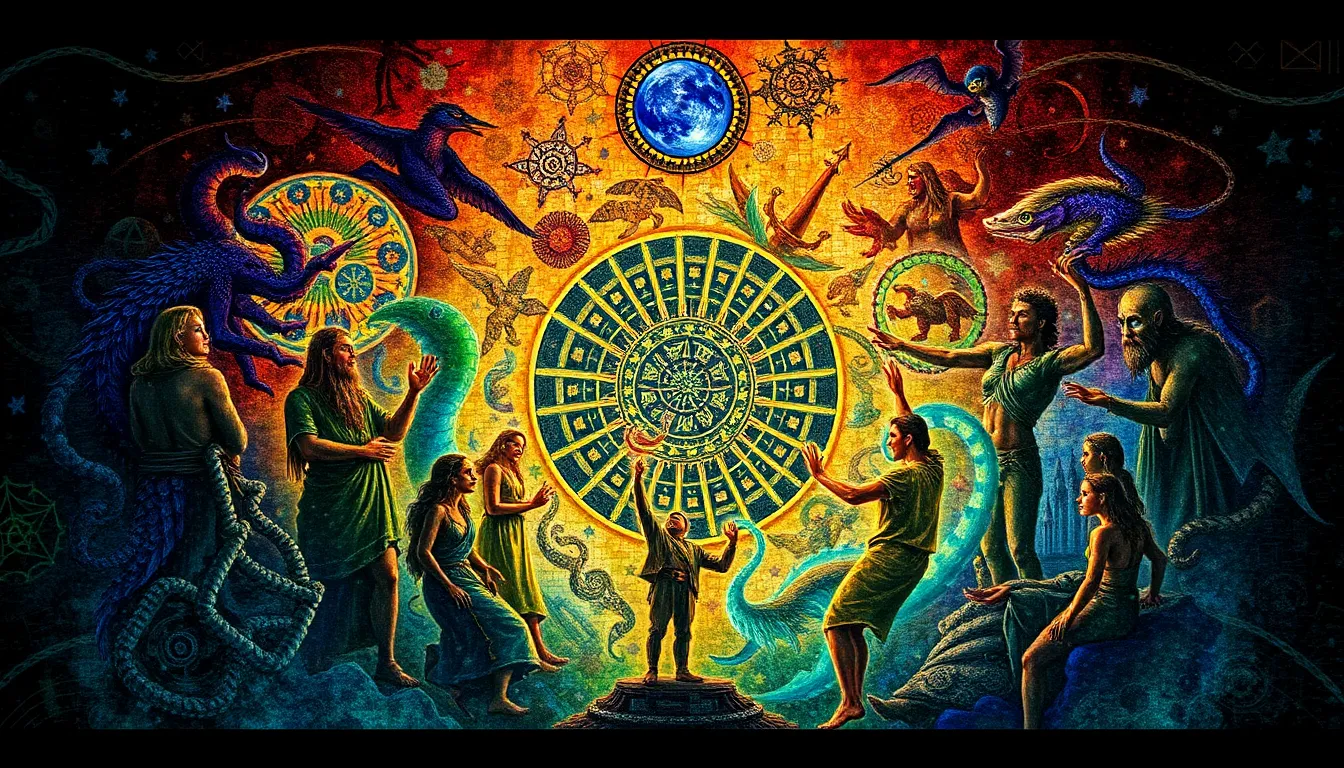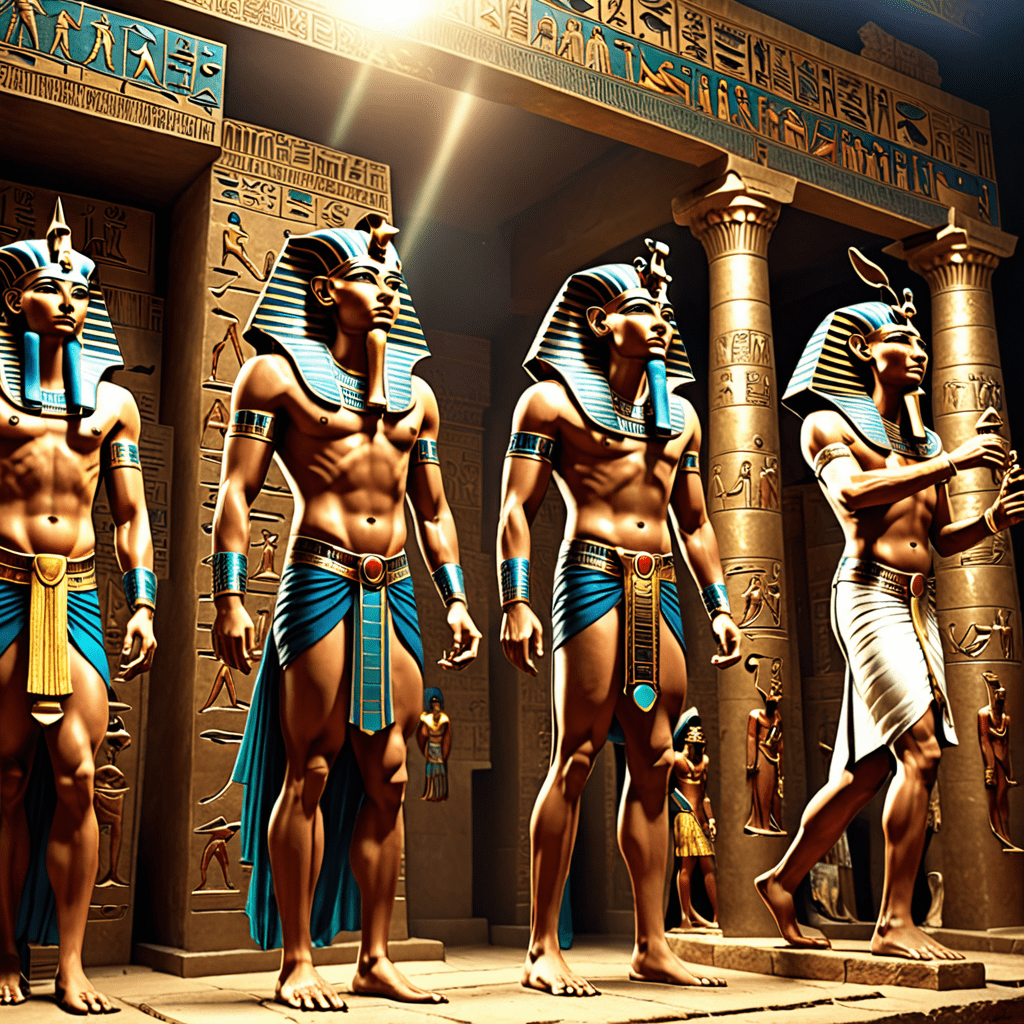Moral Myths and the Nature of Understanding: Lessons from Legends
I. Introduction
Moral myths are narratives that convey ethical lessons, embodying the collective values of a culture. These stories often feature characters facing moral dilemmas, allowing audiences to reflect on their own values and decisions. Understanding moral myths is crucial in deciphering cultural narratives, as they provide insight into the ethical frameworks that guide societies.
This article aims to explore the intricate relationship between moral myths and the understanding of ethics. We will examine the historical significance of myths, philosophical perspectives on morality, and the relevance of moral myths in contemporary society. By analyzing various case studies and critiques, we hope to shed light on the enduring impact of legends in shaping our moral consciousness.
II. The Role of Myths in Human Society
Myths have played a pivotal role in the development of human societies throughout history. They serve as foundational narratives that help to establish social norms and ethical guidelines.
A. Historical significance of myths in various cultures
Across different cultures, myths have been used to explain natural phenomena, human behavior, and societal structures. For instance:
- In ancient Greece, myths like those of Zeus and Hera illustrated the complexities of power dynamics and relationships.
- Indigenous cultures often utilized creation myths to convey their understanding of the world and their place within it.
- In Hinduism, epics such as the Mahabharata and Ramayana serve not only as entertainment but also as moral instruction.
B. Myths as tools for moral education
Myths often serve as moral compasses, guiding individuals and communities in their ethical decision-making. They encapsulate lessons about virtues such as courage, justice, and compassion.
C. The psychological impact of myths on individual and collective identity
The stories we tell shape our identities. Myths foster a sense of belonging and provide shared narratives that reinforce cultural values, influencing both personal and collective identities.
III. Understanding Morality: Philosophical Perspectives
Philosophy provides various frameworks for understanding morality. Different theories offer insights into how we discern right from wrong and the implications of our choices.
A. Overview of major philosophical theories on morality
- Utilitarianism: This theory posits that the right action is the one that maximizes overall happiness.
- Deontology: This perspective emphasizes the importance of duty and adherence to rules, regardless of the consequences.
- Virtue Ethics: This approach focuses on the character of the moral agent rather than specific actions.
B. The intersection of mythology and moral philosophy
Myths often embody philosophical ideas, illustrating moral dilemmas that reflect theoretical discussions. For example, the story of the Trojan War raises questions about honor, revenge, and the consequences of pride.
C. How legends shape moral reasoning
Legends provide practical examples of moral reasoning in action, allowing individuals to grapple with complex ethical issues in a narrative context.
IV. Case Studies of Prominent Moral Myths
To illustrate the lessons embedded in moral myths, we will explore several prominent examples.
A. The story of Prometheus: Sacrifice and consequence
Prometheus, a Titan in Greek mythology, defied the gods by stealing fire and giving it to humanity. His story highlights themes of sacrifice, rebellion, and the consequences of challenging authority.
B. The fables of Aesop: Simple truths and complex morals
Aesop’s fables, such as “The Tortoise and the Hare,” convey moral lessons through simple narratives. These tales emphasize virtues like perseverance and humility, illustrating that wisdom often comes from unexpected sources.
C. The parables of Jesus: Ethical lessons in everyday life
Jesus’ parables, such as “The Good Samaritan,” provide profound ethical insights into compassion and love for others, challenging societal norms and encouraging self-reflection.
V. The Role of Archetypes in Moral Myths
Archetypes are universal symbols or themes that recur across different cultures and narratives.
A. Definition and significance of archetypes
Archetypes serve as templates for characters and scenarios, allowing audiences to connect with stories on a deeper level. They encapsulate fundamental human experiences and moral lessons.
B. Common archetypes in moral myths
- The Hero: Embodies courage and the journey toward self-discovery.
- The Trickster: Challenges the status quo and reveals the absurdities in human behavior.
- The Sage: Represents wisdom and the pursuit of knowledge.
C. How these archetypes influence moral understanding
Archetypes provide a framework for understanding moral complexities, allowing audiences to navigate ethical dilemmas through familiar character types.
VI. The Evolution of Moral Myths in Modern Society
As societies evolve, so too do their moral myths, reflecting contemporary values and challenges.
A. Transition from traditional myths to modern narratives
Modern storytelling often adapts traditional myths to address current ethical issues, as seen in films, literature, and social media.
B. Impact of technology and globalization on moral storytelling
Technology has transformed how we share and engage with moral narratives, enabling a global exchange of ideas and cultural perspectives.
C. The emergence of contemporary moral myths in media and literature
Current narratives, such as superhero films and dystopian novels, often explore themes of justice, power, and individual responsibility, reflecting modern moral concerns.
VII. Lessons Learned: What Myths Teach Us About Understanding
Moral myths impart essential lessons that resonate across cultures and generations.
A. The importance of empathy and perspective-taking
Myths encourage us to consider the viewpoints of others, fostering empathy and understanding in our moral deliberations.
B. Moral ambiguity and the complexity of human behavior
Many myths illustrate that moral decisions are rarely black and white, reflecting the intricacies of human behavior and the context of choices.
C. The role of narratives in shaping ethical frameworks
Narratives provide a structure for understanding complex moral landscapes, guiding individuals in their ethical development.
VIII. Critiques of Moral Myths
While moral myths offer valuable insights, they are not without their critiques.
A. The potential for misinterpretation and oversimplification
Myths can be misinterpreted or oversimplified, leading to skewed understandings of moral lessons.
B. Issues of cultural appropriation and representation
Contemporary retellings of myths may risk cultural appropriation, overshadowing the voices of the original cultures.
C. The dangers of dogmatism in moral teachings derived from myths
Rigid adherence to moral lessons from myths can lead to dogmatism, stifling critical thinking and the evolution of ethical perspectives.
IX. Practical Applications of Moral Myths in Education
Integrating moral myths into educational settings can enhance moral development among students.
A. Integrating moral myths into educational curricula
Incorporating stories that convey ethical lessons can enrich students’ understanding of complex moral issues.
B. Using storytelling as a method for moral development
Storytelling fosters engagement and discussion, allowing students to explore ethical dilemmas in a safe environment.
C. Encouraging critical thinking through myth analysis
Analyzing myths encourages students to question and reflect on moral values, fostering a deeper understanding of ethics.
X. Conclusion
Moral myths are vital in understanding ethics, offering valuable lessons that transcend time and culture. They encourage empathy, critical thinking, and a nuanced understanding of human behavior. As we navigate the complexities of modern life, embracing the lessons from these legends can guide us toward a more compassionate and ethical existence.



